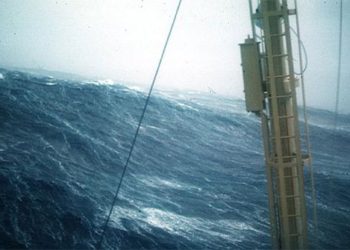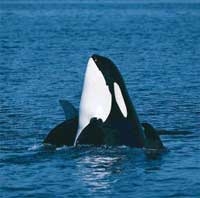Impressive Discoveries of the Year: Upside-Down Fish, Japanese Aircraft Carrier Wreck at 5.5 km Depth, and a Sea Lily with 20 Arms.
The Fish that Swims Upside Down for Its Entire Life to Catch Prey
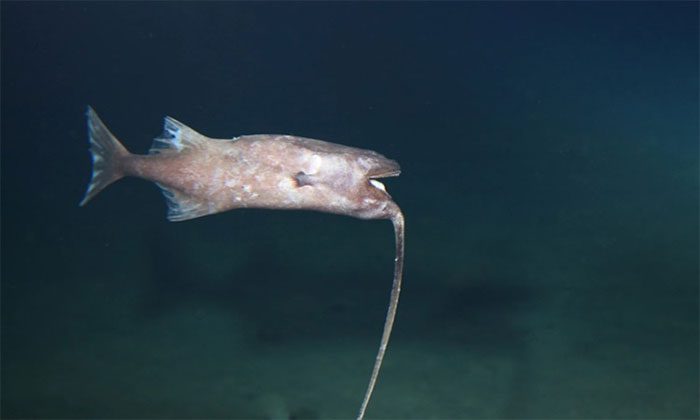
Upside-down lanternfish swimming in the water.
Footage from underwater missions in the Atlantic, Pacific, and Indian Oceans reveals that the upside-down lanternfish spends its days swimming inverted, using a long appendage to lure prey. This unusual swimming posture may allow the lanternfish to catch larger and faster prey without accidentally biting itself. The new footage confirms a visual observation made over 20 years ago, according to Andrew Stewart, a member of the research team and an expert at the Te Papa Tongarewa Museum in New Zealand. The study was published in the Journal of Fish Biology in November 2023.
2 km Deep Canyon Under Antarctica
By attaching devices to the heads of several Southern Elephant Seals (Mirounga leonina) and Weddell Seals (Leptonychotes weddellii), researchers were able to learn more about a hard-to-reach area in Vincennes Bay, Antarctica. They discovered a massive underwater canyon estimated to be 2 km deep. The canyon has been named Mirounga-Nuyina in honor of the seals that helped uncover this site. The study was published in the Nature Communications Earth and Environment journal in July 2023, led by Dr. Clive McMahon from the Sydney Institute of Marine Science (SIMS).
Alien-like Sea Lily with 20 Arms
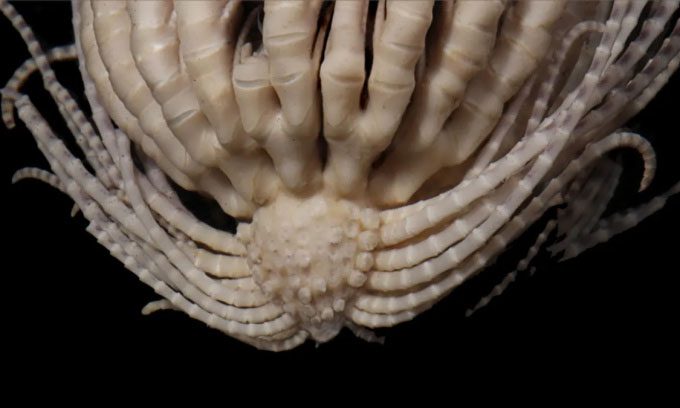
Sea lily with a strawberry-like body and 20 arms. (Photo: Gregory Rouse).
Antarctic Strawberry Sea Lily (Promachocrinus fragarius) is one of four new species described in a study on the diversity of a stemless, free-swimming genus of sea lilies. Although they are not red, they are named for their strawberry-like shape. The study was published in the Invertebrate Systematics journal in July 2023, conducted by experts from the Scripps Institution of Oceanography.
The Culprit Behind the Series of Octagonal Patterns on the Ocean Floor
Research by expert Alexey V. Golikov at the Helmholtz Ocean Research Center in Kiel, Germany, and colleagues helps to decode the mysterious octagonal shapes imprinted on the seabed in the Fram Strait between Greenland and Svalbard. Some of the octagons are very small, while others are larger than a basketball. Using remotely operated vehicles (ROVs), the research team discovered that these may be traces of Dumbo octopuses, which create these strange octagonal imprints on the ocean floor while foraging. The research was published in the Proceedings of The Royal Society B in June 2023.
Exploring the Wreck of a Japanese Aircraft Carrier Sunk 81 Years Ago
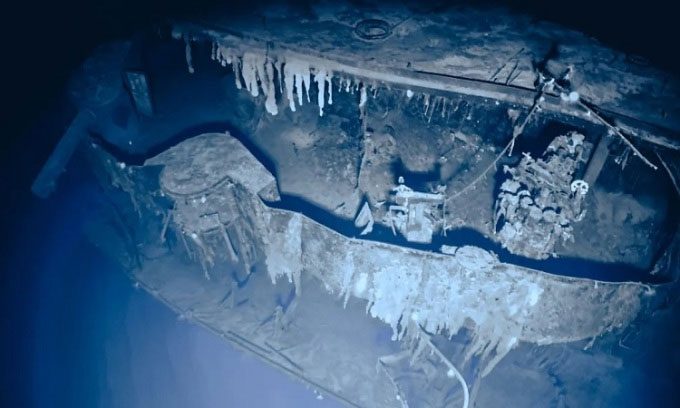
Wreck of the Japanese aircraft carrier Akagi. (Photo: NOAA)
Japanese and American explorers aboard the E/V Nautilus completed the first deep-sea dive to revisit the wreck of the Akagi, a Japanese Imperial Navy aircraft carrier from World War II, located at a depth of 5.5 km beneath the ocean’s surface. The research team conducted a non-invasive dive in September 2023 to capture images of this historically significant wreck, assess its condition, and honor those lost on both sides of the conflict. Due to its remote location and extreme depth, surveying the wreck of the Akagi, along with many other sunken ships from the Battle of Midway, presents significant challenges.








































